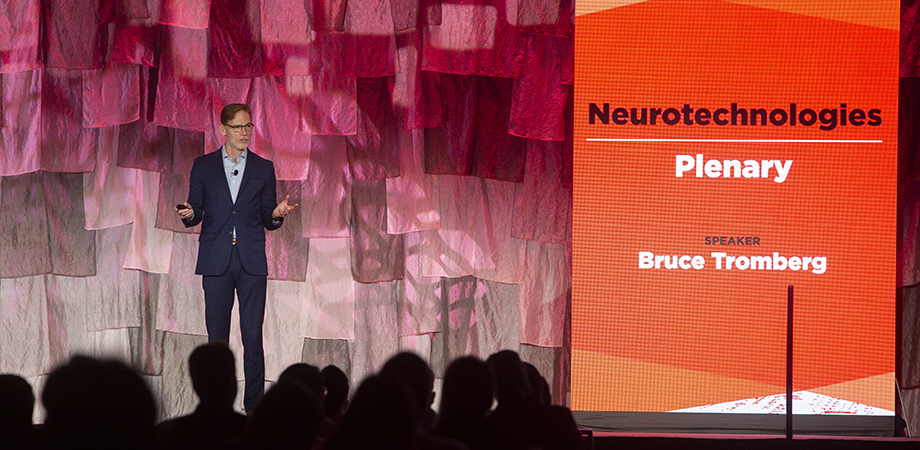Advances in Neurotechnologies

A large crowd gathered on Sunday afternoon at 2020 SPIE Photonics West to hear about the breadth of exciting advances occurring in the field of neurophotonics at the Neurotechnologies Plenary Session. David Boas, from Boston University, SPIE BRAIN Symposium Chair and editor of the journal Neurophotonics, introduced the speakers, and noted that the talks would span from microscopic to macroscopic optical methods, from invasive to noninvasive, and from animal to human studies.
The first speaker, Robert Prevedel from EMBL Heidelberg, gave an overview of current research directions in his lab, including light sculpting and light-field microscopy, which Prevedel notes is "an elegant and powerful method for three-dimensional imaging." Their lab has recently started work on deep tissue imaging using three-photon microscopy to study neuroplasticity in vivo in a mouse, along with photoacoustics to achieve deeper imaging into the mouse tissue. In 2016, their lab accomplished the first demonstration of whole brain calcium imaging in freely moving C. Elegans.
David Kleinfeld from University of California, San Diego, then explained the ways that his group's brain-machine interface (BMI) studies have transformed their understanding of the traditional stimulus–neural response–stimulus feedback loop. Past BMI approaches used a variety of neuronal responses, like local fields and differential responses from pairs of cells, and used a conditioning stimulus, like the tongue. But his group wondered whether they could transition from using spiking signals to measuring neuromodulation in real time, and without a conditioning signal. Their CNiFER (pronounced "sniffer") system allowed them to conduct studies on mice to determine that mice can be trained to control their own neuromodulator level for dopamine and noradrenaline, and that learning could occur without a conditioning stimulus like an auditory or visual cursor.
While the first two speakers were working on advances in basic neuroscience, the next two reported on specific applications. Audrey Bowden from Vanderbilt University presented a new wearable brain imaging device intended to help physicians monitor brain activity in children, without the stress and immobility of MRI machines. The headband her group has developed uses fNIRS, which fills a niche between spatial and temporal resolution to get at what's happening in the brain. The headband is portable, rugged, comfortable, and cheap to manufacture-less than $100 each.

Audrey Bowden demonstrates a wearable, cheap, rugged, and lightweight fNIRS brain monitoring headband designed for children.
At Carnegie Mellon University, Jana Kainerstorfer is utilizing fNIRS for a different clinical need: continuous and noninvasive measurement of brain pressure at the bedside. The current standard requires drilling a hole in the skull to measure intracranial pressure. Instead, her group placed optical probes on human heads and measured hemodynamic changes over time. Using that data, they then applied a machine-learning algorithm to extract intracranial pressure noninvasively.
The final talk veered away from the details of research altogether and focused instead on an issue of interest to everyone in the room: funding. Director of the National Institute of Biomedical Imaging and Bioengineering, Bruce Tromberg, pointed out that bioengineering now constitutes ~13% of the NIH budget, a 78% increase since 2008. "The optics and photonics industry has benefitted enormously from that accelerated growth," he said.
He also pointed to the ongoing BRAIN initiative, which expects to receive $5.2 billion, of which only 25% has already been spent. A large amount of that remaining money is expected to be spent in 2023, a surge that will provide enormous opportunity for researchers interested in neurophotonics. Pointing to Bowden's research shift from OCT to fNIRS in the earlier talk, he said, "People will move in new directions to find things that are exciting" as a result of this large funding opportunity.
| Enjoy this article? Get similar news in your inbox |
|



